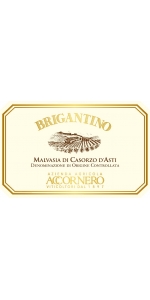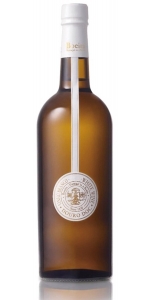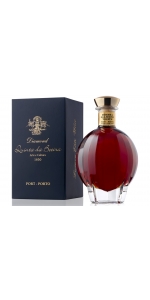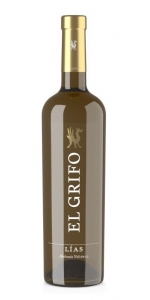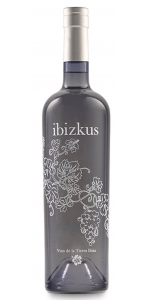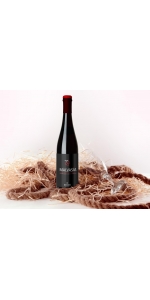Malvasia
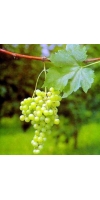
Grown in California, The Canary Islands, Italy and Australia, Malvasia is a white wine group with Greek origins. Although there is some controversy over where the grape originated from and who its ancestors were, it was mostly grown in Greece. The name Malvasia is Italian with the historical importance of the grape becoming evident in Venice wine shops. During the Venetian Republic, Malvasia was called Valvasie. Malvasia is planted all over the world, but performs best when it has good sun exposure and soil drainage. The majority of Malvasia varieties are related to Malvasia Bianca with the notable exception of Malvasia di Candia, this is a distinctly different sub-variety of grapes that are grown throughout Italy, the San Joaquin Valley in California, The Greek Islands of Paros and Syros, and Rioja and Navarra in the Canary Islands. Throughout central Italy, Malvasia is blended with Trevviano. This adds texture and flavor to the wine. In Tioja it is blended with Viura. Known under different synonyms which include Malvasier in Germany and Malvazia in the Eastern part of Europe, the French grape varieties are sometimes referred to as Malvoisie, but are in no way related to the grape of the same name. Other sub-varieties of the grape include Uva Greca, Rojal, Subirat, Blanquirroja, Blancarroga, Tobia, Cagazal, and Blanca-Rioja.
Accornero Brigantino Malvasia di Casorzo is made from 100% Malvasia.
Malvasia is a pleasant, sweet wine, low in alcohol content, that can be enjoyed at any time of day. Made exclusively from grapes grown in the hilltop vineyards of Casorzo and neighboring , it’s the pride and prestige of the area. It has always been the star wine of all local festivals. A comfort wine for all seasons and reasons, it has an aroma evocative of roses. The rich, aromatic wine is ruby-red, vibrant and slightly frothy. lt can be paired with desserts, fruit salads and sweets, but it can also be enjoyed as an aperitif or as a drink for any party occasion.
Color: Vibrant Ruby red
Bouquet: Sweet and aromatic, floral
Taste: Aromatic with rose fragrances
Great companion to desserts, such as biscotti / cantucci (Italian almond biscuits from Piemonte)
Boeira Douro White 40% Malvasia Fina, 30% Rabigato, 20% Gouveio and 10% Fernão Pires.
Good volume in mouth revealing its fruity character, now enhanced with a citrus component. Slight mineral touch that gives it personality. It is a complex and deep wine with a persistent finish.
Good accompaniment to fish dishes, salads, and can also be drunk as appetizers. Should be consumed at a temperature between 8º and 10ºC.
Boeira White Diamond Port is made from Malvasia Fin, Viosinho, Gouveio, and Côdega de Larinho.
Clear amber color, on the nose aromas of citrus, tangerine peel, peaches and honey. In the mouth it is full but elegant, well integrated and persistent finish
Boeira White Diamond Port is the perfect companion for a number of foods including appetizers, lean fish, salads, pasta or desert like apple pie or crème brulée.
Review:
The NV White Diamond Port is the estate's 10-year Tawny based on Málvasia Fina, Viosinho, Gouveio, and Côdega de Larinho. Caramelized orange, toffee, fig, and spicy white chocolate notes all shine on the nose, and this beauty hits the palate with medium to full-bodied richness and a round layered, incredibly seamless mouthfeel. It's all about its seamless, decadent, sweetly fruited, yet balanced style.
-Jeb Dunnuck 94 Points
El Grifo Lias Malvasia Volcanica is made from 100% Malvasia Volcanica.
Color: Straw yellow, with light golden hues. Clear and bright.
Aroma: Medium-high intensity of a wine in evolution. Fresh, citrus (orange peel) and tropical (passion fruit and mango) fruits. Flowers (orange blossom, jasmine, violets), fennel, and complex aromas such as silex or flint (phosphorus). Yeast autolysis is reminiscent of the aromas of baked goods and yeast. Bottle ageing brings out hints of dried fruits, honey and caramel.
Taste: Full-bodied, with a lengthy and unctuous texture, very strong natural acidity, citrus freshness, mineral notes and saltiness. Persistent finish.
Residual Sugar 0.5 g/L
Total Acidity 6.02 g/L
pH 3.36
Total SO2 91 mg/L
El Grifo Lias Malvasia Volcanica is made from 100% Malvasia Volcanica.
Color: Straw yellow, with light golden hues. Clear and bright.
Aroma: Medium-high intensity of a wine in evolution. Fresh, citrus (orange peel) and tropical (passion fruit and mango) fruits. Flowers (orange blossom, jasmine, violets), fennel, and complex aromas such as silex or flint (phosphorus). Yeast autolysis is reminiscent of the aromas of baked goods and yeast. Bottle ageing brings out hints of dried fruits, honey and caramel.
Taste: Full-bodied, with a lengthy and unctuous texture, very strong natural acidity, citrus freshness, mineral notes and saltiness. Persistent finish.
Residual Sugar 0.5 g/L
Total Acidity 6.02 g/L
pH 3.36
Total SO2 91 mg/L
Ibizkus White Tierra Ibiza is made from 90% Malvasia and 10% of other grape varietals (Macabeo, Muscat and Chardonnay).
With the Malvasia grape as the protagonist, Ibizkus white is an intense wine with its own personality. A straw yellow color with golden hus, it is medium-bodied, smooth, creamy and aromatic with citrus fruit, stone fruit and smoked fragrances. Silky on the palate with balanced acidity..
Vineyards on the west of the island bring density and fullness to the wine while the Cala Mastella vineyards add freshness.
Malvasia is grown on calcareous clay terraces in the San Mateo region and limestone rock slopes on a vineyard close to the sea at 180-metre altitude.
Review:
"Fragrant wine with a pot-pourri of flavors: apricot, hop flowers, cucumber skin and jasmine. Slightly spritzy. Would really shine with food perhaps.
- Decanter World Wine Awards, Silver Medal - 90 pts
Rinaldi Malvasia di Castelnuovo Don Bosco Tasting notes: Frizzante style, with hints of black pepper, cherries and red fruit notes. A frothy, & slightly sweet aperitif…
Vines are planted on limestone soils. Only 63 hectares exist of this very small DOC of Malvasia di Castelnuovo Don Bosco. Grape varietal is Malvasia di Schierano.
Pairs well with dessert and Asian food.
Rinaldi Red Dream is made from 100% Malvasia
this wine is obtained with a cold maceration (13° C) for 48 hours. We work in this way just to extract the color and the wine scent from the peels.
Then we soft press the grapes and we separate the solid part from the liquid part and we have the juice.
Then we keep the wine at 0 degree Celcius (32 degrees Fahrenheit) temperature and we have a natural cleaning of the must.
When we decide to bottle it the temperature increased at about 17 degrees Celcius, and when we reach 5.5% Alcohol by Volume and the desired atmospheric pressure is obtained, about 2 atmospheres, we block the fermentation with the cold and we filter it again and
finally, we put it in bottle.
The wine is ruby red but not too deep, fruity and pleasant. It's a dessert wine, it is possible to appreciate it at his best if you serve it chilled.
This frothy and fruity red wine delivers flavors of honeysuckle and black pepper. Light, fun and exciting; it’s great for parties and light fare. 100 % Malvasia Nera.
"The non-vintage Rinaldi Red Dream, which comes from 100% Malvasia Nera, has about 7% alcohol, so it is slightly more potent than its two siblings. Gorgeously fresh and frothy, with loads of cherry, honeysuckle, spice box and spring flowers, this is an exciting party wine that is brilliantly packaged, and I doubt a person can be found who would dislike it. However, these wines are meant to be drunk in their exuberant youth, so this one as well as the following two efforts should be consumed over the next 6-12 months."
- Wine Advocate (Issue 201, June 2012), 90 pts
"This Wine is a bit heavier than a bracchetto, but it shares the sweetness, effervescence and low alcohol that make it a delicious dessert wine. The added weight suggests pairing it with desserts that include ice cream."
- Washington Post (February 8th 2012), **
- back
Selected Options
Grape Types
Categories
Pricing
Countries
Regions
Grape Types
Wineries
Organic/Free Shipping
Weingut Prager Stockkultur Achleiten Gruner Veltliner Smaragd is made from 100 percent Gruner Veltliner.
Franz Prager, co-founder of the Vinea Wachau, had already earned a reputation for his wines when Toni Bodenstein married into the family. Bodenstein’s passion for biodiversity and old terraces, coupled with brilliant winemaking, places Prager in the highest echelon of Austrian producers.
Smaragd is a designation of ripeness for dry wines used exclusively by members of the Vinea Wachau. The wines must have minimum alcohol of 12.5%. The grapes are hand-harvested, typically in October and November, and are sent directly to press where they spontaneously ferment in stainless-steel tanks.
Stockkultur is a 0.3-hectare plot at the top of Achleiten and was purchased by Toni Bodenstein in 2005. The name refers to the old style of training each vine to a single stake; the traditional method of vine cultivation in the Wachau before the 1950s. The vines planted in 1938 are among the oldest in the Wachau.
Tasting Notes:
Prager’s stylistic signature is that of aromatic complexity coupled with power and tension. High-density planting and long hang times ensure ripe fruit flavors and concentration, yet allowing leaves to shade the fruit lend vibrant aromatics of grasses, herbs, and wildflowers. Minerality is a constant feature of any Prager wine.
Food Pairing:
With minimum alcohol of 12.5%, Grüner Veltliner Smaragd is a concentrated and full-bodied dry white wine. Its intensity of flavor and ripeness of fruit make it ideal with high-integrity ingredients such as seared white fish or sautéed spring vegetables. Grüner Veltliner is a classic accompaniment to Wiener Schnitzel.
Review:
From vines planted in 1937 and picked as the first of the Smaragd wines, the 2020 Ried Achleiten Grüner Veltliner Smaragd Stockkultur (planted with 15,000 vines per hectare) opens with a spectacular deep and complex but refined, fresh and flinty bouquet with intense, ripe pear and biscuit aromas. On the palate, this is a dense and lush yet pure, elegant and complex, wide and powerful but also mineral Achleiten with a long, finely tannic and still sweet finish (due to more than 30 grams per liter of dry extract). Tasted at the domaine in June 2021.
At Prager, I could not determine that 2020 would be inferior to the 2019 vintage; on the contrary, the 2020 Smaragd wines fascinated me enormously in their clear, cool, terroir-tinged way. A 38% loss had occurred mainly because of the hail on August 22, although predominantly in the Federspiel or Riesling vineyards. There was no damage in the top vineyards such as Ried Klaus, Achleiten or Zwerithaler. "Interestingly, the vines are in agony for about two weeks after the hail. There was no more growth, no development of ripeness and sugar," reports Toni Bondenstein. The Veltliner then recovered earlier, while even picking a Riesling Federspiel in October was still a struggle. "Why Riesling reacted more intensively to the hail, I don't know myself either," says Bodenstein. Whole clusters were pressed to preserve acidity and to compensate for the lower extract, and compared to 2019, the 2020s were left on their lees longer. In June, however, the 20s in particular showed outstanding early shape.
-Wine Advocate 96 Points
Michel Thomas Sancerre Blanc is 100% Sauvignon Blanc (40% Caillottes, 40% Grosses Terres, 20% Silex)
The wine displays an exotic nose with a touch of smoke and licorice. On the palate, peach and watermelon dominate with citrus zest and chalk notes.
Aged on the lees for a few months (no oak). It goes well with seafood, fish, goats cheese.

